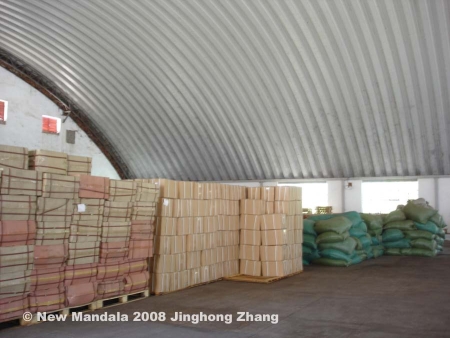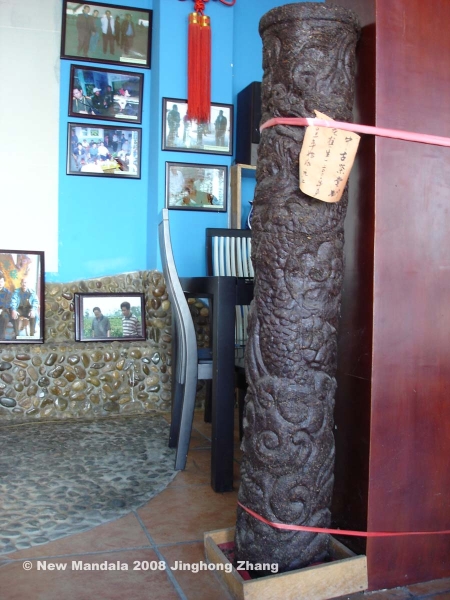As Puer tea becomes popular around China, ordinary consumers have learnt to distinguish two issues when they bargain in the teashops: ‘where is it made?’, referring to the origin of the basic tea material; and ‘how old is it?’, since Puer tea is known as ‘the older the better’.
Now a third issue is becoming important: ‘where is it stored?’. This added issue is due to people’s recent realization that the quality of Puer tea is not only determined by the raw material and the processing technique; neither is it true that an older tea is definitely better than a younger one; but quality also largely depends on what post-fermentation temperature and humidity the tea experiences during storage.
In the tea markets of Kunming, I’ve seen a teashop that specialises in Puer tea that has been stored in Hong Kong. Such Puer tea is called gang cang cha, literally meaning ‘tea out of a Hong Kong storehouse.’ The owner told me this was due to the special demand by some clients who appreciate the taste of Puer tea stored in Hong Kong rather than in Yunnan. He said that the humid and hot climate in Hong Kong could speed up the post fermentation of Puer tea, much quicker than being stored in drier place such as Kunming. Yunnan, no doubt, is the production place for Puer tea, but in the eyes of the big consumers in Hong Kong, Taiwan and Guangdong, Yunnan is no good for storage, and some of them even say that the Yunnanese don’t know how to properly store and consume Puer tea.
A big tea storehouse called tian xia cha cang (tea storehouse for the world), was established in Yuanjiang, Yunnan, in 2006. Yuanjiang is located in the moist and hot area of Honghe (Red River) valley, in southeast Yunnan. And it is said that one year’s storage here would be equal to three years of storage in Kunming. I visited it in June last year. All the teas were stored in the warehouse under controlled temperature and humidity (picture above). There I saw a compressed Puer tea in the shape of a pillar, whose color had turned dark red, really like shu cha, artificial fermented tea, although later I found it was actually sheng cha, naturally fermented tea (picture below). The label said it was produced in 2001 and been stored in Yuanjiang since 2003. I was shocked because I’d never seen such fast change on Puer sheng cha with the same age in Kunming.
The establishment of Yuanjiang tea storehouse aims to show that Yunnan is not only good at Puer tea production, but also good at Puer tea storage, a form of post-production. All the Puer tea being stored here will be sold later with added value from storage.
 Facebook
Facebook  Twitter
Twitter  Soundcloud
Soundcloud  Youtube
Youtube  Rss
Rss 
